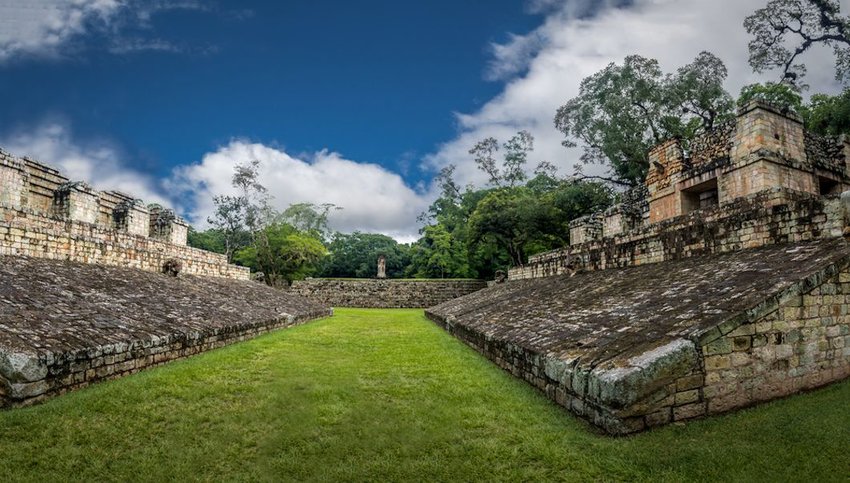For many, the chance to visit Petra or Machu Picchu is too good to pass up. But though these sights inspire awe and wonder, their popularity can make the visitor experience a frustrating one. If you like to spend your holiday exploring what’s left of ancient civilizations without the crowds that often accompany such sites, then why not try these underrated ruins around the world?
Great Zimbabwe

Tucked away in the south-eastern corner of Zimbabwe, the ruins of Great Zimbabwe are what remain of an ancient capital. The city was founded in the 11th century and abandoned in the 15th century; today it’s on the UNESCO World Heritage list. Nevertheless, fewer than 80,000 tourists visited the place in 2018. The site is thought to have once been a royal palace, surrounded by stone walls. A population of somewhere between 10,000 and 20,000 Shona would have lived here across a 200-acre site, making it the largest of its kind in the area.
Sudan’s Meroe Pyramids

In stark contrast to the Pyramids of Giza near Cairo, Egypt, the pyramids of Sudan are little known. You’ll find them in Meroe, once the capital of the Kingdom of Kush, ruled by the Nubian kings. There are almost 200 pyramids spread across the desert near the River Nile, many of them built as tombs for royal burials. These Meroe pyramids are smaller, narrower and steeper than those north of the border but, like their neighbors, are over 4000 years old, delighting those intrepid enough to come and see them.
Koh Ker, Cambodia

Over 6 million travelers visit Cambodia each year, most of them attracted by the breathtaking Angkor Archaeological Park. But while the majority flock to high profile temples such as Angkor Wat, Ta Prohm, and the Bayon, lesser-known sites such as Koh Ker are relatively overlooked. It’s well worth making the journey from Siem Reap to see the 10th century seven-tiered pyramid, built as the state temple of Jayavarman IV. Surrounded by forest, you’ll experience the same sense of discovery that those who uncovered the site must have felt.
Copan, Honduras

Over 2 million tourists visit Honduras each year, but most do so aboard cruise ships and only a small fraction venture inland. The ball court at the Mayan site of Copan is similar to that found in Mexico’s Chichen Itza. But with fewer people to share the experience with, it’s much easier to imagine what it might have been like when a game was in full swing. Intricately-carved stelae (three-meter-high columns of stone) and a fabulous staircase decorated with hieroglyphs also make this site a must-see.
Ggantija Temple, Gozo, Malta

Malta’s megalithic temples attract visitors from across the Mediterranean and beyond. On the island of Gozo, two temples comprising the Ggantija complex were constructed between 3600 and 3200BC. They were abandoned about 2500BC and forgotten about until they were rediscovered in the 19th century. The local population once believed they were built by giants – that’s what the name “ggant” means – and when you see these enormous limestone blocks up close, you’ll understand why. Some are over 5 meters long and weigh more than 50 tons.
Ancient City of Vijayanagara, Hampi, India

Vijayanagara was, by all accounts, a prosperous and grand settlement. In its heyday in the early 16th century, it was probably the richest city in India. Merchants flocked here from as far afield as Iran and Portugal. But in 1565, the Vijayanagara Empire fell to a group of Muslim Sultanates. They overran its capital and destroyed it, leaving it in ruins. Today, surrounded by palm trees, plantations, and paddy fields, there are few places more satisfying to explore.
Chan Chan, Peru

Travel to Trujillo in northern Peru to uncover the secrets of nearby Chan Chan. It was once the biggest city in the Americas, the largest adobe city on the planet and the capital of the Chimú civilization, which existed from 850 to 1470AD. Until the Incas defeated them, 60,000 people lived here, occupying something in the region of 10,000 structures. Wealth translated in ornate palaces and temples, many bearing elaborate friezes. The Chimú knowledge of irrigation techniques enabled the city to thrive in its desert setting, which makes it all the more fascinating to visit as the intense rains caused by today’s El Niño phenomenon threaten its existence.





